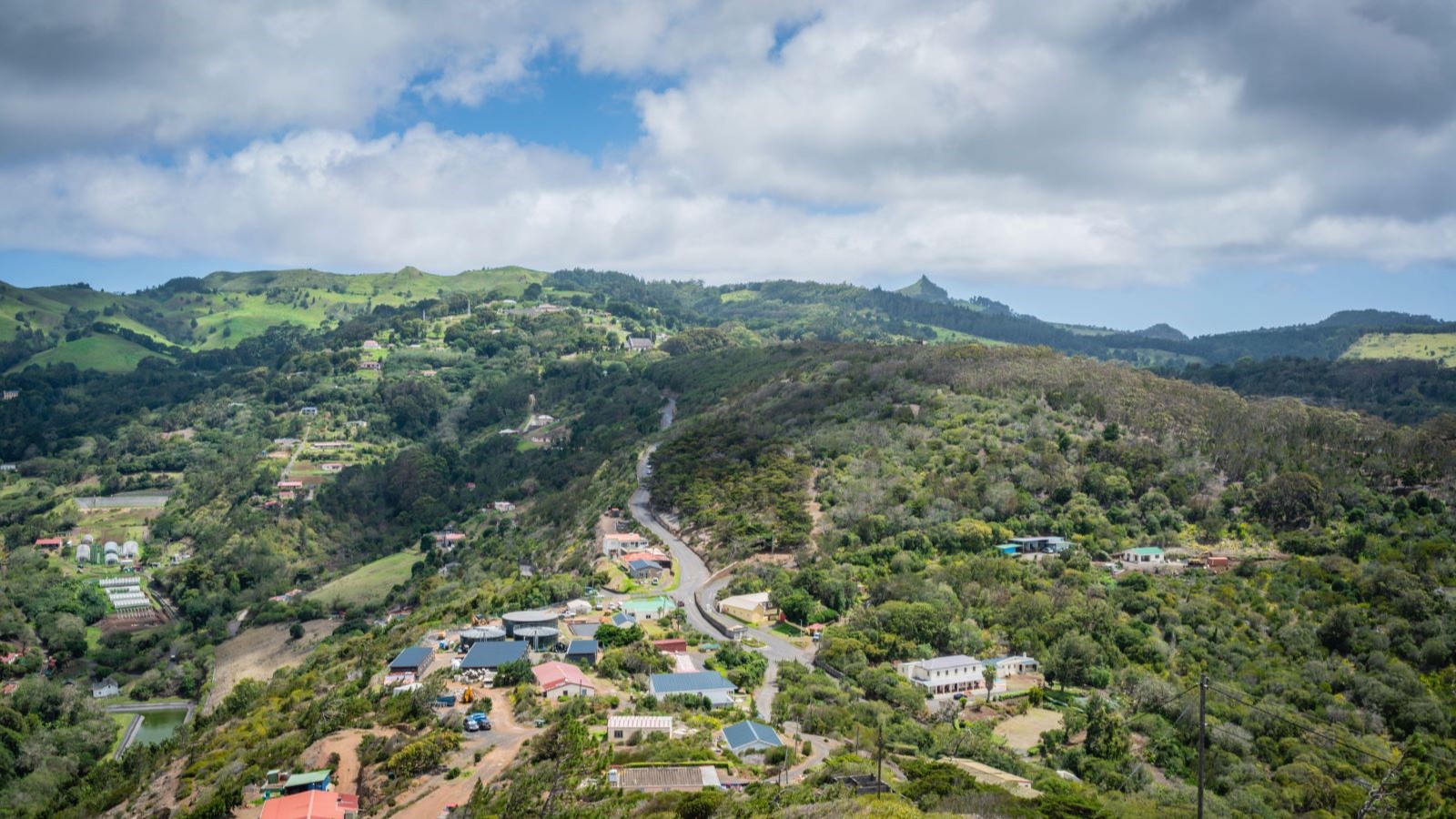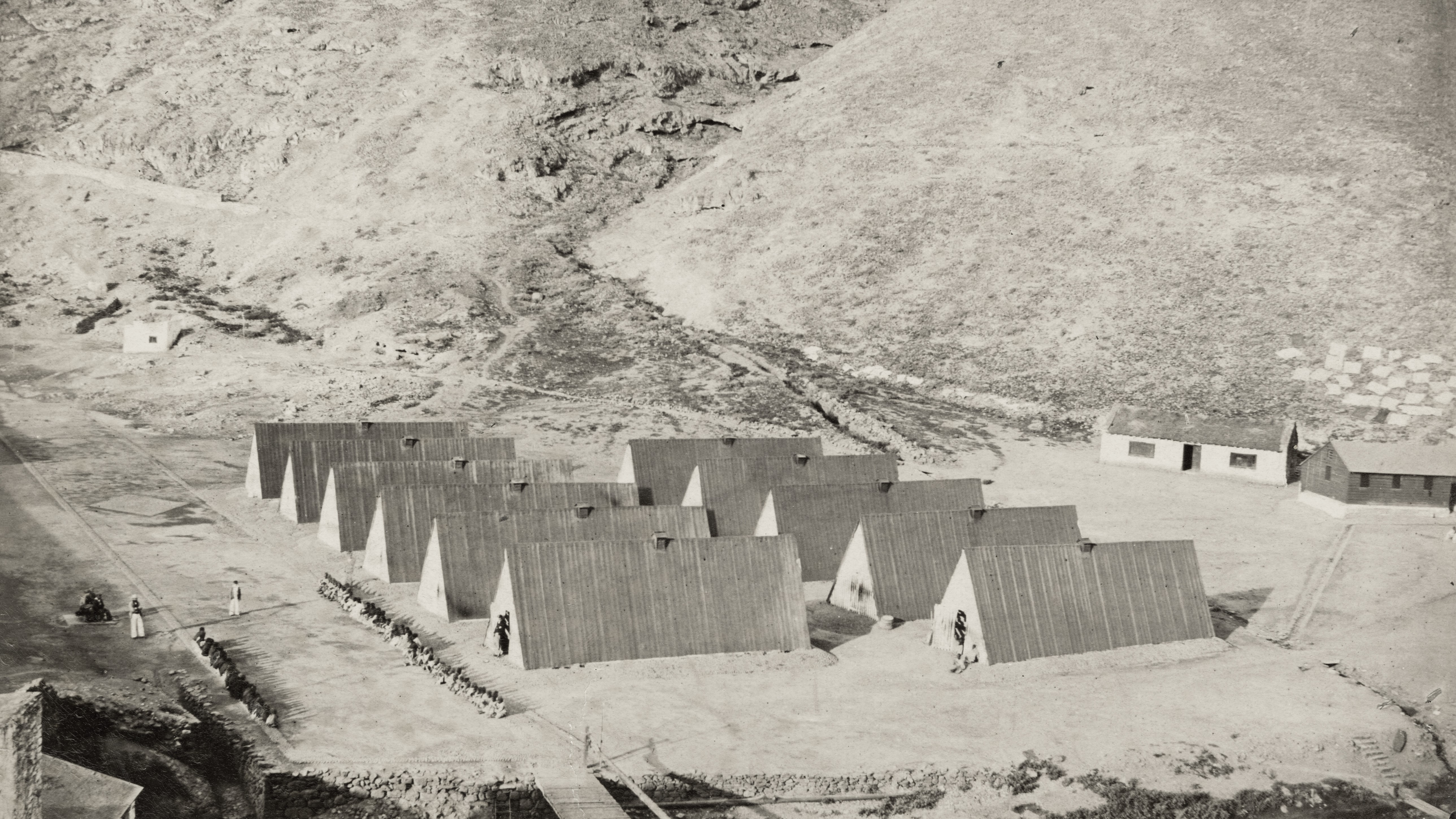Origins of enslaved Africans freed by British, then abandoned on remote Atlantic island revealed by DNA analysis
A study reveals the likely origins of 27,000 Africans left on the island of St. Helena as part of Britain's attempt to eliminate the transatlantic slave trade.

A first-of-its-kind DNA analysis has revealed the likely origins of thousands of enslaved Africans who died on a remote Atlantic island after being liberated and offloaded there by the British Navy.
Roughly 27,000 Africans were taken from seized slave ships between 1840 and 1867 and deposited on the island of St. Helena as part of Britain's attempt to eliminate the transatlantic slave trade. Housed in ramshackle tents in the middle of an arid valley, up to 8,000 of the liberated people died of disease and malnutrition.
The parts of Africa they were taken from before embarking on the dangerous Middle Passage across the Atlantic Ocean has, until now, been a matter of speculation. But analysis of historical DNA, described Thursday (Sept. 7) in The American Journal of Human Genetics, reveals the locations where these enslaved people likely originated.
Related: Plantation slavery was invented on this tiny African island, according to archaeologists
"I think this study illustrates how ancient genomics can be used to recover long-lost aspects of the lives and experiences of enslaved and other marginalized communities whose stories were often omitted from written records or deliberately obscured," Hannes Schroeder, an associate professor of genomics at the University of Copenhagen in Denmark, said in a statement.

A horrifying voyage
Located 1,000 miles (1610 kilometers) off the coast of southwest Africa, St. Helena was a vital outpost for the British in their efforts to eliminate the slave trade. This is because the tiny island sat in the center of the Middle Passage — the second leg of the triangular trade route undertaken by Europeans to transport goods to Africa in exchange for enslaved people; who were then delivered to the West Indies and Brazil via horrific and life-threatening voyages across the Atlantic.
European nations profited enormously from this trade. Britain, the world's biggest slave-trading nation, used the 2.7 million enslaved Africans who survived the Middle Passage (out of the 3.1 million abducted by the British from their homelands between 1562 and 1807) to develop economies at home and in its colonies abroad.
Get the world’s most fascinating discoveries delivered straight to your inbox.
Yet after Britain's declaration of the abolition of slavery in 1833, St. Helena soon became the ideal port for the Royal Navy to launch raids on slave ships. There, they would offload tens of thousands of enslaved people before putting the slaver crews on trial.
The Africans who survived the abhorrent conditions of the journey were quarantined in St. Helena's Rupert's Valley. Thousands died of dehydration, dysentery, smallpox and malnutrition. Some of those who survived were repatriated to Africa or taken to the West Indies, while others were granted permission to stay on the island.

Retracing the past
"It was known that they most likely originated from areas south of the equator, but where exactly they came from was unclear," lead author Marcela Sandoval-Velasco, a genomics researcher at the University of Copenhagen, said in the statement. "By sequencing their DNA and comparing it with that of thousands of living people from across sub-Saharan Africa we were able to infer where in Africa they likely originated and thereby help restore knowledge of their ancestral connections."
In the new study, scientists extracted DNA from the bones of 20 individuals excavated from Rupert Valley mass graves and compared it to that of more than 3,000 modern Africans from 90 populations across sub-Saharan Africa.
Their results largely aligned with historical documentation: 17 of the 20 individuals were male; the people abducted came from diverse groups, with different languages and customs; and the enslaved people originated from different populations located between northern Angola and Gabon as the slave trade shifted northwards from Central Angola across the 19th century.
The researchers write that their study, while a good first step, is limited by sparse genetic sampling of ethnic groups in present-day Africa and by the small number of excavated remains sampled. If these two hurdles are overcome, they say, it could offer historians an even finer-grained understanding of these displaced peoples' stories.

Ben Turner is a U.K. based writer and editor at Live Science. He covers physics and astronomy, tech and climate change. He graduated from University College London with a degree in particle physics before training as a journalist. When he's not writing, Ben enjoys reading literature, playing the guitar and embarrassing himself with chess.


